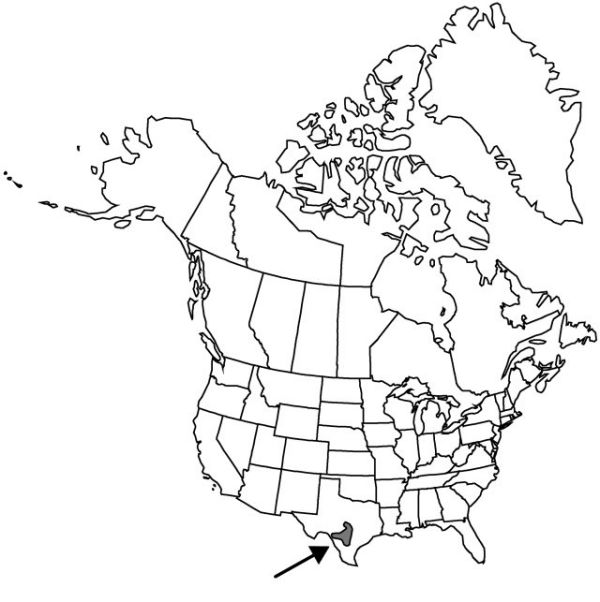Nolina lindheimeriana
Proc. Amer. Acad. Arts 14: 247. 1879.
Plants acaulescent; caudices short, vertical, subterranean, with many rosettes. Leaf blades not wiry, lax, grasslike, flattened, 30–100 cm × (3.5–)4–12 mm, not glaucous; margins serrulate, with close-set, cartilaginous, corneous teeth; inflorescence leaf blades 25–60 cm. Scape 3–7 dm. Inflorescences paniculate, 3–10 × 1–3.5 dm; bracts caducous, 1–15 cm; bractlets to 2 mm, margins hyaline. Flowers: tepals yellow-green, 1.8–2.5 mm, margins hyaline; fertile stamens: filaments 1.2–1.5 mm, anthers 0.7–1 mm; pedicel pendulous or recurved, proximal to joint 1–2 mm, distal to joint 2–5(–6) mm. Capsules winged, slightly inflated, 6–10 × (6–)7–11 mm, notched basally and apically. Seeds loosely invested in capsules, rounded, 3.1–4.2 × 2.4–3.3 mm.
Phenology: Flowering spring.
Habitat: Limestone hills of open woodlands and scrubland
Elevation: 400–600 m
Discussion
Nolina lindheimeriana is quite infrequent and becoming more so as its habitat is destroyed through development or overgrazing.
Selected References
None.
